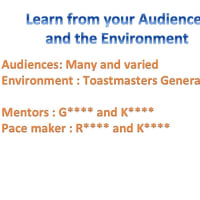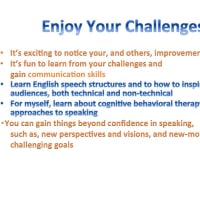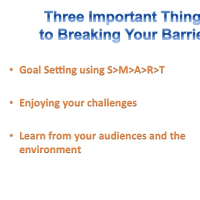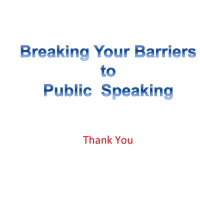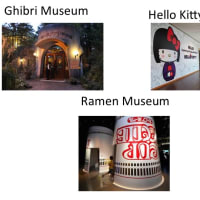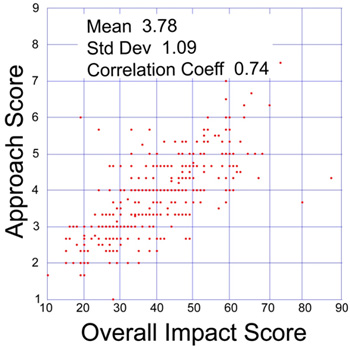
https://loop.nigms.nih.gov/2010/07/より。
ビジネススクールに併設されているHarvard-i Labが主催するグラント writingセミナーに参加してみた。講師はImmuneticsというバイオベンチャーのCEOであるLevinさんという方、なんでもこれまでNIHのグラントを取りまくっている($40 millionとか)人らしい(以下のようにyoutubeに講演がアップされている)。
ターゲットはSBIR(Small Business Innovation Research)というアメリカののトランスレーショナルリサーチ向けのグラントの書き方のレクチャーであったが、基本のグラントとなっている、NIHのグラントに準じているため、いろいろな情報は別のグラントを書くのにも使えそうで大変参考になった(*)。
彼の論拠によると、グラントプロポーザルのメインゴールは、レビューアーに「こいつらに任せておけば大丈夫」と思わせることである。つまり欠点をなくすとともに、長所を伸ばすことが必要である(**)。
1)話の筋(storyline)が通っており、また一貫性があること。
2)多すぎず少なすぎないpreliminary dataがあること、可能であれば特許(innovationの指標になる)もあると望ましい
3)publication, collaboration, facility, reagentが利用可能もしくは少なくとも利用できるような状態になっていることを示すこと。
4)CV(biosketch),letter for supportなどの付加的な情報も最後の一押しをするようにつかうこと
などのポイントが繰り返し説明された。
また面白かったのはNIHなどのグラントで誰がグラントが当たるかを決めるファクターの話であった。
NIHのグラントを決めるのはoverall scoreの高さによるらしいのだけれども、これは単純にグラントプロポーザルの各構成要素の点数を足したものでなく、レビューアーの全体像に端する印象できまるものであるらしい。
ある調査で各構成要素の点数のうちどれと一番相関があるかを計算したところ、0.74 for approach, 0.54 for innovation, 0.49 for investigator and 0.37 for environmentとなるらしく、preliminary dataを含めた計画の部分がものをいうということであった。
なお具体的な注意点は、SBIRのPhaseIグラントをもとに行われた。
Phase I grantの構成は
Abstract 1 page
Specific aim 1 page
Innovation 1-2 page
Approach 3-4 page
Biosketchなど補足書類
のようになっており、それぞれ注意点は以下のようになっているようだ(**)
1)Abstract (Publically available)
The significance
The problems
The solution
The plans
の4つのポイントを上記の構成で、簡潔に書く。
2)Specific aim
1) Significance(重要性)
(例)シャーガス病は、アメリカの輸血での感染症の新しい脅威となっている
2) Problem and solution(問題の定義)
(例)シャーガス病の迅速検査キットを作ることで、輸血による感染を防ぐごとができる
3) Aim (多すぎてはいけない)
(例)
1) Development of a prototype
2) Preliminary Characterization
2)Innovation
(1)Impact & cost efficiency
(2)Etiology & unmet need
★Be clear what is innovative in your proposal?
そのためには申請中のものも含め特許があるとよい
またConfidentialな情報も、confidentialであると脚注をつけて、具体的に記述した方がよい。
★用語の使い方も注意。単にImmunoassayといってどこが新たしいのと思われるよりより、a novel reporter chemistryといった方がよいこともある。
3)Approach
研究計画のセクション、一番グラントが取れるかどうかを決めるのに重要なセクションである
(1)Preliminary data
Not too much and not too little:多すぎると、この計画をやるのは意味がないと思われる。少なすぎると、プロポーザルの信憑性を上げるのには足らない
Model experiments (シュミレーション?) VS Actual dataは実際のデーターがよいのはもちろんのこと。
(2)実際の計画
Cast
PI:technical expertise, leadership, organization, managing experience, managing experience, prior grant, publication
Collaborators: Expertise in the field, complimentary expertise, access to the resources, letter of support (write it by yourself, and make it say what you expect)
さらにこのチームの信憑性を増すような言葉をいれるべし。自分で言った言葉とともに他人の言葉として、それが入っていることは大きい。
Facility&Resources&Cosortium
どんな施設リソースをどのように利用するのか?またなぜその施設なのか?を明記。特に離れた場所の施設の利用の場合には。
Human subjectの利用
サンプル利用などの手続き等を詳細に書いておくこと
4)Biosketch
Personal statement の部分で、supportiveな情報を入れこめ
5)letters of support from Collaborators
★write it by yourself, and make it say what you expect さらにこのチームの信憑性を増すような言葉をいれるべし。自分で言った言葉とともに他人の言葉として、それが入っていることは大きい。
といった感じでした。
レッドライン&バスが大いに遅れ、ちょっとくじけそうになりながら、たどりつきましたが、結構勉強になりました。
(*)NIHのオンライン投稿システムはバグがあるらしいが、エラーメッセージがでるまでの期間が最終日になると24時間くらいかかることがあるらしく、最終日に投稿するとエラーメッセージが締め切り後にもどってくることもあるのだとか。最終日の投稿は避けた方がよい。小ネタですが。。
(**)ちなみにレビューのランクが、exceptional, outstanding, excellentでないとまず通らないらしい。very good以下はD.O.A(Death on arrival)なんだとか。アメリカ人の形容詞の使い方がよくわかる。。
***********************************************
ちなみに講演の詳細は以下のとおりでした。
Writing an SBIR: Giving it your Best Shot
This workshop led by Dr. Andrew Levin (CEO of Immunetics) will focus on the tactics and practical elements that give you the best shot at a successful SBIR grant application, in particular to the National Institutes of Health. Topics will include how to prepare for a new application, how to write for maximal impact, how to take advantage of collaborations, how to see the application from the reviewer’s point of view, how to avoid simple mistakes that lead to rejection, how the non-scientific components of an application need to support the science, how applications are scored during the review, what to do if your application doesn’t succeed on the first try, and more. Practical examples drawn from actual grant applications - both funded and not funded - and the associated reviews will be presented. The workshop is aimed both at first time grant writers and those with prior experience.
Dr. Levin is President, Founder and Scientific Director of Immunetics, Inc., a leading innovator of assay technology for infectious disease research and diagnosis. He has been awarded over 25 grants and contracts totaling over $40 million by NIH and CDC, making Immunetics one of the top small business recipients of federal funding in Boston. He is currently focused on launching new tests for bacterial and parasitic agents to address infectious threats to blood transfusion safety. Dr. Levin received his A.B. in Biochemistry from Princeton University and his Ph.D in Molecular Biology from the University of Wisconsin, after which accepted an NIH Postdoctoral Fellowship at Harvard University.












